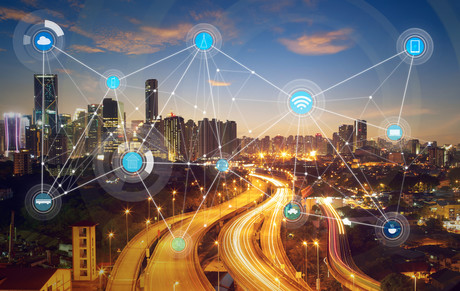Optimising infrastructure using edge computing

Vertiv (formerly Emerson Network Power) has released a research-based analysis of network edge technology that identifies four main archetypes for edge applications and the technology required to support them.
“The primary goal in this analysis was to help those involved with edge data centres and hubs understand the needs of the digital ecosystem by identifying the characteristics and requirements of the top edge use cases,” said Gary Niederpruem, chief strategy and development officer at Vertiv. “Recognising commonalities of the archetypes is a step toward providing an optimised infrastructure.”
The downloadable PDF analysis is called Defining Four Edge Archetypes and their Technology Requirements. The four archetypes are:
Data Intensive — This includes use cases where the amount of data makes it impractical to transfer over the network directly to the cloud or from the cloud to point of use due to data volume, cost or bandwidth issues. Examples include smart cities, smart factories, smart homes/buildings, high-definition content distribution, high-performance computing, restricted connectivity, virtual reality, and oil and gas digitisation. The most widely used example is high-definition content delivery, where major content providers such as Amazon and Netflix actively partner with co-location providers to expand delivery networks to bring data-intensive streaming video closer to users to reduce costs and latency.
Human-Latency Sensitive — This archetype includes use cases where services are optimised for human consumption, and it is all about speed. Delayed data delivery negatively impacts a user’s technology experience, potentially reducing a retailer’s sales and profitability. Use cases include smart retail, augmented reality, website optimisation and natural language processing.
Machine-to-Machine Latency Sensitive — Speed also is the defining characteristic of this archetype, which includes the arbitrage market, smart grid, smart security, real-time analytics, low-latency content distribution and defence force simulation. Because machines are able to process data much faster than humans, the consequences for slow delivery are higher than in the Human-Latency Archetype. For example, delays in commodities and stock trading, where prices fluctuate within fractions of a second, may turn potential gains into losses.
Life Critical — This archetype encompasses use cases that directly impact human health and safety. Consequently, speed and reliability are vital. Use cases include smart transportation, digital health, connected/autonomous cars, autonomous robots and drones. Autonomous vehicles, for example, must have updated data to operate safely, as is the case with drones that may be used for e-commerce and package delivery.
Australia on way to meet EEC targets
The country should 'stay the course' on home energy renovations to support...
CSIRO 'Living Lab' to shape NSW's energy future
NSW households and small businesses can learn how to potentially unlock lower power bills and...
Researchers to supercharge Australia's grid resilience
QUT research is harnessing the skills of engineers, data scientists and behavioural economists to...










